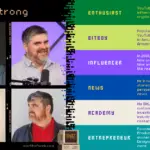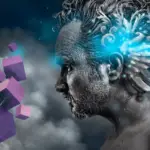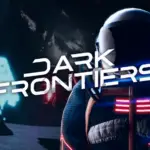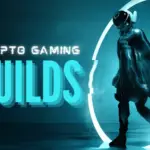Last updated on February 26, 2022. Are you following Socratoshi Nakaplato on Twitter?
There is no official description of Web 3.0. You can see different explanations and different boundaries determined by various experts. These versions are not the same as the version numbers of software. You will not get an update notification tomorrow as you get for your macOS, Windows, iOS, or Android copies.
Instead, you will see a change in your lifestyle and habits. Technology will affect you so profoundly that you will be the one who gets updated. Think of these moments in your life (if you are old enough like us):
- You 0.0 – Before internet
- You 1.0 – After the first time you connected to a thing called “internet” via a 56k modem and read news “online” and “surfed” the web
- You 2.0 – After the first time you found your long-lost high school friend and “liked” his profile photo on Facebook or the first time you watched a cat video on YouTube
- You 3.0 – After the first time you used a decentralized system
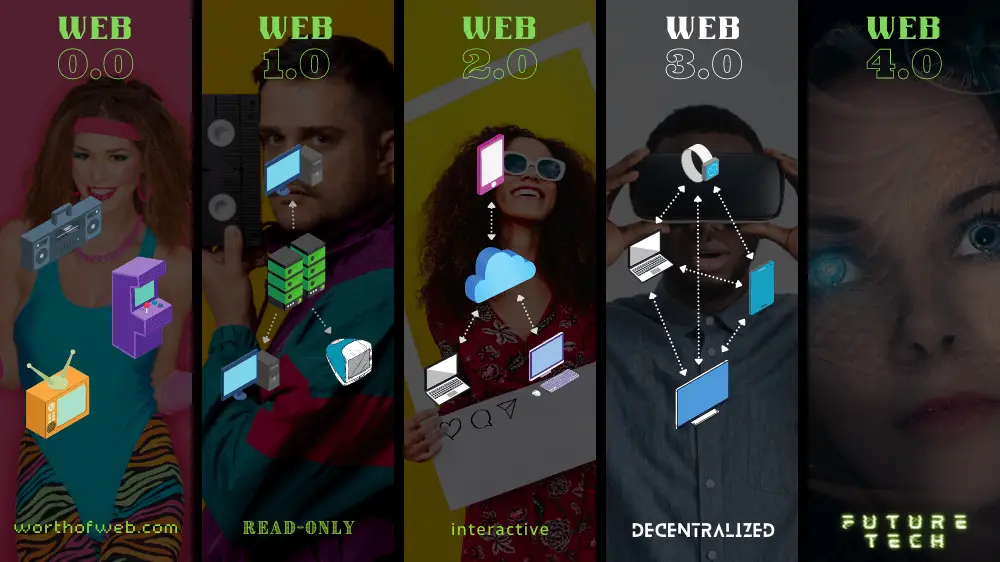
Now, let’s go over the previous versions of the web, let’s see the problems they solve, where they fall short, if Web 3.0 is here or not, or more importantly, if we are ready for the change or not.
Web 1.0 (1991-2004)
The internet is one of the most powerful inventions of human history. It redefined the word connection. The origins of the Internet date back to the 1960s. The Internet was widely used by academia in the 1980s, but commercialization marked the beginning of the transition to the modern Internet.
Although the terms “Internet” and “World Wide Web (www)” are used interchangeably, technically internet is the hardware layer, and www is the software layer. Network of computers, copper wires, fiber-optic cables, and wireless networks create the infrastructure that we know as the internet. We use this infrastructure with the help of an application layer which we know as the web.
Check the story of Sir Tim Berners-Lee, the inventor of the World Wide Web (www), in the video below:
People who took part in the invention and development of the World Wide Web were true visionaries. They even created an HTTP response code that is still “reserved for future use” today. Check our 402 Payment Required: Back To The Future post to learn more about the subject.
Nowadays we can’t think about our lives without being “connected”. If you want to be offline for a long period, you need to make some planning ahead.
Back then, being connected was an activity itself. We were “surfing” the wild web. There was a limited number of content creators, and users were the consumers of the web. That’s why Web 1.0 can be defined as “read-only”.
Although static and primitive when we look back now, Web 1.0 gave us a huge power. But that power was spread out. Since it was mostly a one-way street, the information that the websites can collect about you was pretty limited.
In time, internet speed got better. New devices and technologies increased connectivity. New e-commerce websites, business solutions, search engines, and platforms were created. These developments created a snowball effect for global adoption. As the adoption increased, new platforms that provide interactivity and user-generated content created a viral effect, and Web 2.0 was there to change our lives.
Whether you simply follow the space from outside, get involved in the development, or invest in the projects you like today, the past can be our guide in this new era. There is a similarity between Web 1.0 and Web 3.0 in this regard.
If you want to look at the past, if you want to see the ’80s and the early days of the internet from the perspective of hardware engineers and software developers, Halt and Catch Fire is a good TV show. You can get the feeling of the era, and observe the startup scene back then, early web and game development, and the lives of the developers during the period.
This is relevant because when you check the current blockchain projects, you get a similar vibe. The adoption of Web 3.0 will be like those times, but probably in 3-4x speed.
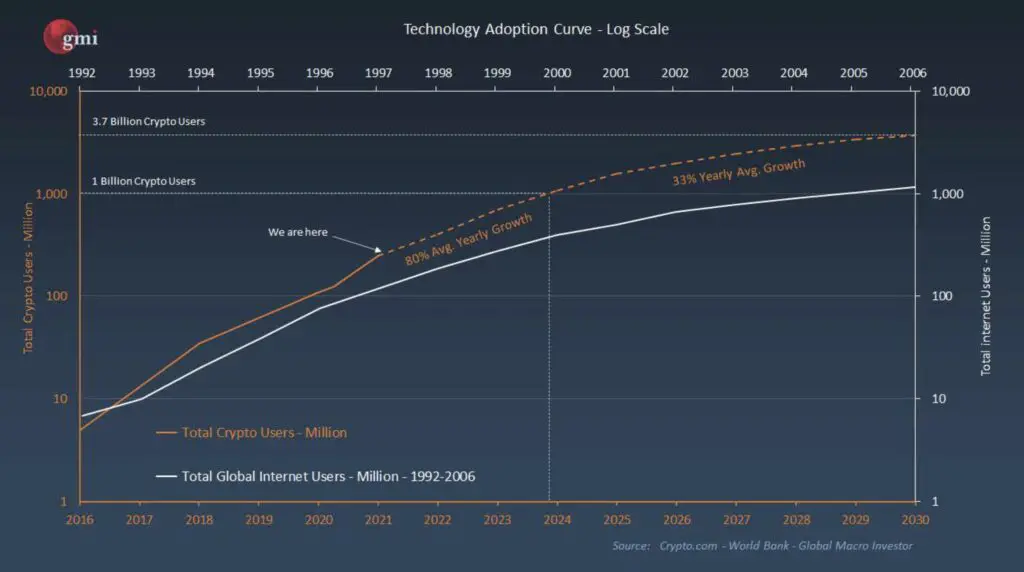
You can see the technology adoption curves for crypto versus the internet in the chart above. The white line covers the era of Web 1.0. This is a logarithmic chart so it grows in 10x iterations. Little changes between the lines create huge differences.
Web 3.0 will not be some features added on top of Web 2.0. It will create an almost new internet with new dynamics in uncharted territory. Just like Web 1.0 did that time.
Before we look into Web 2.0 in detail, let’s talk about the major economic event of the Web 1.0 era that shaped the future of the financial markets and web. The Dot-Com bubble was one of the largest speculative bubbles in U.S. stock market history.
A 5-minute history lesson about the Dot-Com bubble:
History doesn’t repeat itself, but it often rhymes.
There are lessons to be learned from the Dot-Com bubble, its crash, and the bear market afterward. Whether you invest in crypto markets or traditional markets, always do your own research and know what you own.
Follow the macro trends, understand the importance of utility, try to see past the hype, control your emotions in overheated periods, don’t buy bad quality, set your investment time horizon, create your buying and selling strategy, and the most important, invest in your financial and technical education. At the end of the day, your knowledge is your treasure.
Web 2.0 (2004-present)
This is the era where the web became our lives.
Users were not only consumers of the web anymore, now they can easily create their own content, publish, and share it with the world. This interactivity defines Web 2.0.
No need to talk about the positive side of Web 2.0 for hours. Because you all use it every day, and you know the positive effects of it on your life. We get ultra-rich experiences in social, e-commerce, search, business, education, information, gaming, finance, collaboration, and more. We are thankful to all the developers for all of these experiences.
However, it could stay at the level where we were happy enough to share some of our data, and tolerate some of the privacy issues because we were getting fair value from their products and services.
Unfortunately, big platforms and service providers passed the thin red line. The line where one side is about optimizing their algorithms or services for a balanced approach, and the other side is about maximizing their profits at all costs.
With mergers and acquisitions, they became monopolies in their respective fields. This is the capitalism game, fair enough. But big data, big media, big corporations, everything became big, users became smaller, and they shifted the web democracy to web oligarchy quickly, and it is this way for many years now.
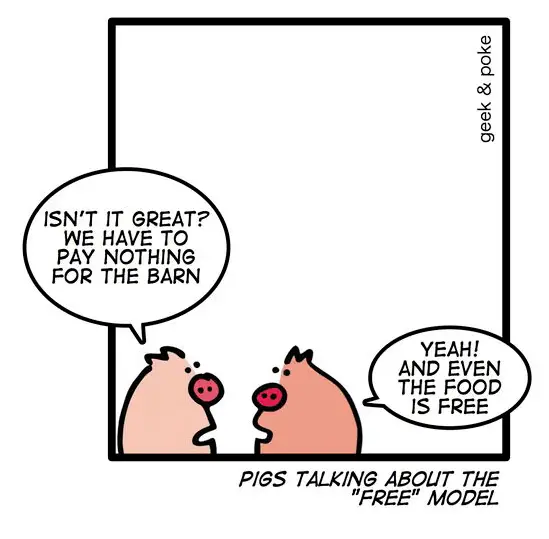
Barn: platforms, algorithms, service providers, monopoly, censorship, tools for institutions, governments, powerful entities
Pigs: users
Meat: your data, your privacy, your time
Now, we are the product in the Web 2.0 ecosystem. If someone could tell us about selling user data to third parties, censorship, fake news, cancel culture, hate speech, propaganda, social engineering, and similar stuff 20 years ago, we couldn’t imagine such a future for the web.
The biggest platforms of Web 2.0 tuned their algorithms to maximize the time on their networks. They excelled at manipulating our emotions, and it led to extremely polarized groups.
Now, society can be divided for any topic. Actually, the topic itself is not relevant anymore. It is not about the ideas. You can be canceled for anything you say or don’t say, and think or don’t think. Dystopian future? Newspeak, thoughtcrime, Big Brother?
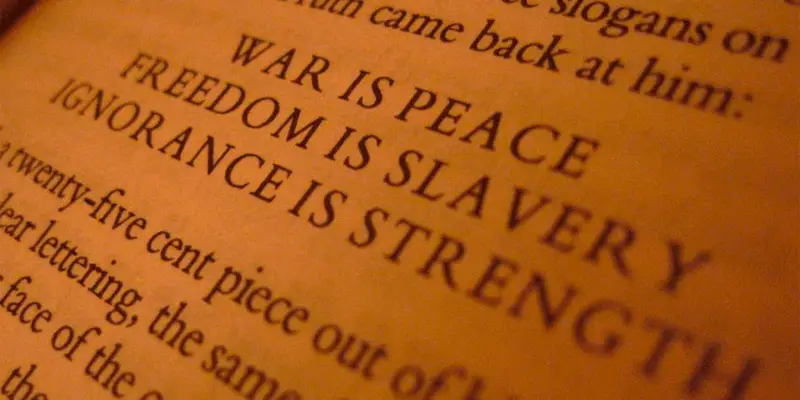
Similar concerns about the monetary system motivated Satoshi Nakamoto for the Bitcoin solution. Its adoption showed the technical possibilities of blockchain systems. Why not implement the same solution to eliminate centralization in other parts of our connectivity?
The transition from Web 1.0 to Web 2.0 is easier to understand. But the transition from Web 2.0 to Web 3.0 is not simple and straightforward. Because it is more of a backend solution, it includes blockchain which is a sophisticated concept itself, and the change will not be only technical, it will be a radical change with philosophical, sociological, and economical aspects.
Web 3.0 (Are we ready?)
We said there are different boundaries drawn by different experts for Web 3.0.
The common part everyone can agree upon is the underlying problem. If you want to define Web 3.0, follow the “trust” or the “lack of it” to be exact.
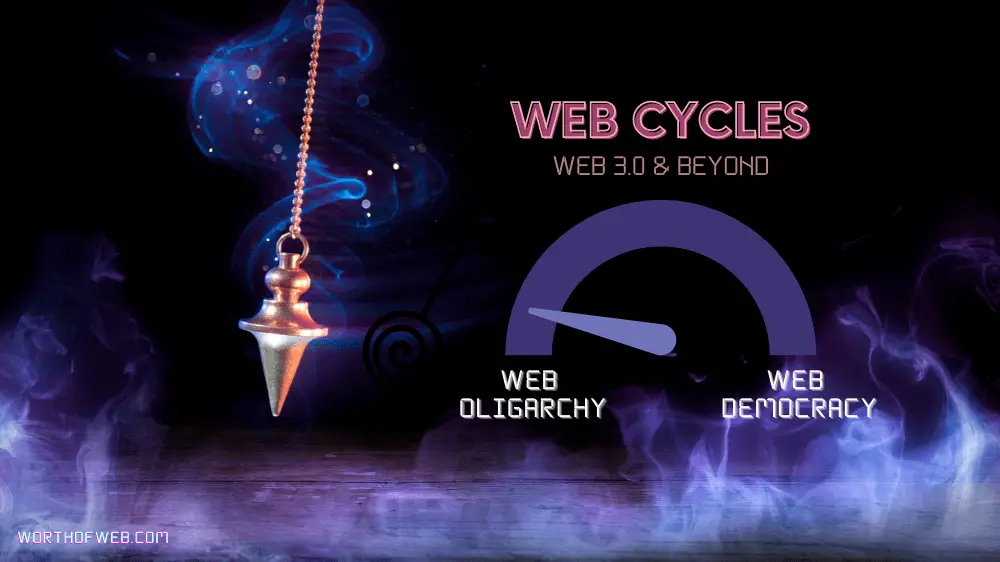
We have a monetary system already. We have efficient databases to hold records. We have all types of successful applications for gaming, virtual worlds, chat, meetings, collaboration, art, cloud storage and computing, audio, video, music.. anything we talk about blockchain projects today. Why do we need a new web then?
The missing part is the trust component of all these systems. Not everything will be decentralized, many industries can go on with their current practices, and there will be many hybrid solutions going onward. In that sense, Web 2.0 will coexist with Web 3.0, just like we still use the main functions of Web 1.0. But for a lot of applications that affect our life, we don’t trust in the management or the other users of the system.
The thing is we don’t need to trust anyone, and actually it is much more efficient. Software without a central point of control, mathematical proofs that verify the transactions, and a network running with independent participants on distributed locations globally are reliable. People are not.
So what is a blockchain? Check the video below to understand better:
Blockchain and other DLTs (Distributed Ledger Technology) enable the trust component. A side note here, blockchain is just one type of distributed ledger. All blockchains are distributed ledgers, but not all distributed ledgers are blockchains. For example, DAG (Directed Acyclic Graph) projects are DLTs that work with a graph instead of a chain of blocks.
Done right, true decentralization can be achieved with DLTs. DApps (Decentralized Application) created on these systems can create trustless, open, and transparent systems. With the economic and governance value of coins or tokens supporting the system (and with the right distribution and tokenomics), a whole new world is possible.
We think this paradigm shift will be the boundary of Web 3.0.
There were some P2P (Peer-to-Peer) applications way back in the Web 1.0 era that was an early attempt at Web 3.0 as we discuss today. For example, when you downloaded an MP3 via Napster or uploaded a file from your computer to a torrent network, you were part of a P2P network. But to say “That is Web 3.0”, usage of modern secure public or private DLTs is a better prerequisite.
We believe blockchain, DLTs, metaverse, NFTs, crypto gaming, and other related concepts will all blend in with massive adoption and will be considered under the umbrella term “Web 3.0” in the future. That’s why we changed our focus from Web 2.0 to Web 3.0 at Worth Of Web headquarters.
Let’s hear another opinion. CoinMarketCap explains Web 3.0:
For example, imagine a video platform that is run by a DAO (Decentralized Autonomous Organization), owned mostly by token holders all around the world, minimum censorship (community rules for illegal content), no agenda, create to earn, “watch to earn”. It would be nice, right? There are such projects already, work in progress, they need to solve technical issues going forward but some of them will succeed.
Gamers that are playing traditional games spend time, energy, and buy in-game assets. But they can’t truly own those in-game assets. They don’t make any money for their time in the game or their accomplishments. However, crypto gaming is already changing these with its play-to-earn and NFT mechanics.
Gaming guilds are creating opportunities and uplifting the economy in the rural areas of some Southeast Asia countries. These guilds are the early products of Web 3.0. Crypto gaming creates a new economic model. As with every new economic model, the free market sees the opportunities and missing points and fills that void. Check our Crypto Gaming Guilds post to learn more.
Countries like Vietnam embrace this new gaming market on the game development side as well. Some Filipino merchants are now comfortable with accepting SLPs (Smooth Love Potion, one of the two tokens of the Axie Infinity game) as payments.
DAOs (Decentralized Autonomous Organization) can be the next version of many organizations. All the way from small companies, charities, open-source projects to corporations, institutions, and governments. Imagine a small country with no leader, citizens are decision-makers. Of course, there need to be levels of expertise, maybe a hybrid model with technocracy, algocracy (usage of algorithms, artificial intelligence), and sub-DAOs. Minimum corruption, quick and efficient system, fair, secure, and reliable records. When the existing legislation and bureaucracy find a way to deal with DAOs legally (who will be the legal entity that is responsible and represents the organization?), we will see increasing adoption of these management models.
NFTs (non-fungible tokens) became popular in the digital art space, and people think of pixelated images when they hear NFTs. Almost everything we know will be tokenized, and there will be tokenized things in the future that have not existed before in any shape or form. Even now there are projects working on things like fractional ownership and collecting rent with your NFT for real estate, tracking real-world objects through the supply chain and beyond and automation of business processes and accounting for the object, or buying selling the energy in tokenized form for the excess output of the solar panel on your roof. Yes, it is not about pixelated images. Those cute images are just version 0.0.1 for fungible and non-fungible tokens.
These are a fraction of early examples. Web 3.0 and its decentralized working mechanics are already changing lives, and it is just the beginning. All we need to do as a society is to open our minds and educate ourselves more about the endless possibilities. Possibilities that can boost even the GDPs of countries, minimize the youth unemployment rate, decrease inefficiencies of current sluggish systems, and increase prosperity and well-being of people.
It is not about some meme coins and the “what happens in Vegas” approach. Technology is here for us to embrace. Please, don’t be on the wrong side. Focus on learning more about the possibilities.
Technology predictions are double-edged swords. Even successful visionaries are often wrong with their predictions or the timing of the technology. It is a fun read if you check quotes about electricity, telephone, cars, radio, tv, computers, internet, etc. from famous visionaries in their respective eras.
So in the next section, let’s explore some of the early obstacles for Web 3.0 adoption before making more technology predictions.
Web 4.0 (Future)
What can make Web 3.0 a failure? Will there be a point that we will search for a Web 4.0 because Web 3.0 will be at the position of Web 2.0 now?
As we said before, the transition from Web 2.0 to Web 3.0 will be a radical change with technical, sociological, and economical aspects. So, let’s go over these aspects to make some educated guesses about the early stages of Web 3.0 adoption.
For the technical side of things, although there are some obvious scaling issues, we are at the very early stages of the technology. The most creative minds in the software development industry are focusing on the development of the Web 3.0 space. There are many major projects and countless new startups that are trying to solve scaling and interoperability problems. Sooner or later, technical issues will be solved one by one.
We believe the economical and sociological sides will be more important than the technical side for the adoption. Participants with deep pockets, governments, regulations and the next version of the money (digital fiat currencies) are the obstacles in the early economic life of Web 3.0. Let’s start with the effect of deep pockets.
True decentralization is the key to the success of Web 3.0. We went over the previous versions above. When you analyze how the web has developed so far, you see that it was like a swinging pendulum.
It started as a democracy. Power concentrations increased over time and we saw the hunger for the democratization of the system. Web 3.0 starts with good hopes. People want to have more freedom and more ownership of the web. Web 3.0 with its infrastructure and dynamics can give us that. It can bring the pendulum back to the “Web Democracy” side.
If “decentralized” becomes a mask for central concentrated powers again, that will be a problem for Web 3.0. There is a debate about if the VCs (Venture Capitalists) own Web 3.0 or not. Check the charts below to see the initial token allocations of some projects:
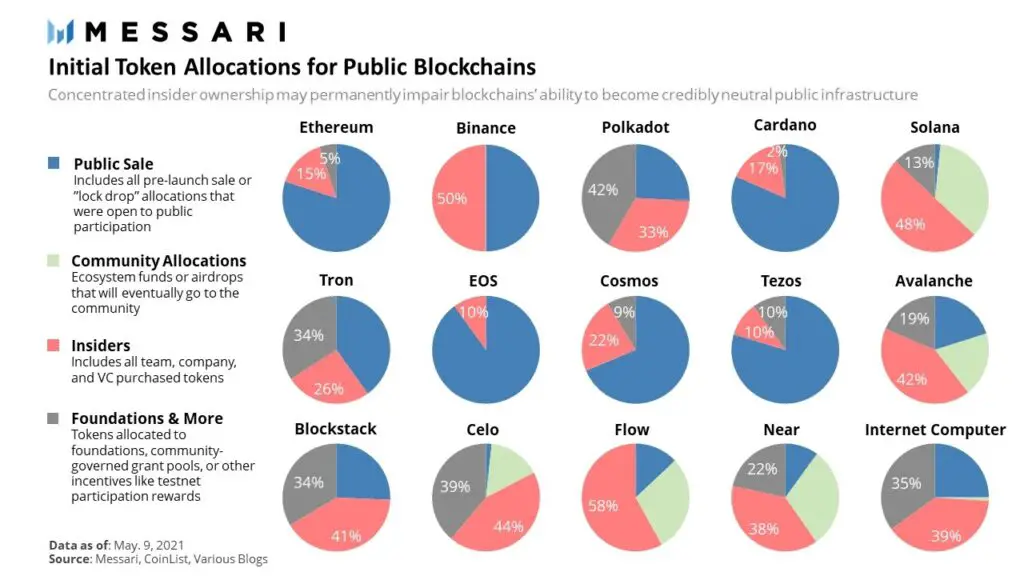
Early-stage investors are critical for the future of a project. If few VCs own a big pie, and there is no lock system for their tokens, they can easily dump those tokens on the public at the first opportunity. If the token distribution is fair, then selling events by a few participants will not crash the prices and ruin the future of a bright project. Besides, if owning tokens or coins gives you voting power for the future of a project, then you don’t want an unbalanced distribution. That’s why token distribution is critical for economics, governance, security, and the decentralization of Web 3.0.
Before we talk about governments, regulations, and fiat currencies, let’s make some recommendations. If you want to have a glimpse into a “dark” future, please check In Time movie, Nineteen Eighty-Four movie or book, and Black Mirror series. Ready Player One (movie and book) is about a metaverse with an evil corporate gaming guild inside.
If you watched these or read the books, you can guess where we are going with this. Can you imagine a politician that signs legislation for a leaderless DAO government? Sounds like a geek’s utopia, right?
The web is not just web anymore. It is power. So Web 3.0 has a lot to do with governments around the world. Not just in monetary aspect, but with regulations, freedom, privacy, and surveillance. Meanwhile in China:
Let’s finish the article with CBDCs (Central Bank Digital Currency).
CBDCs will be the ultimate tool to control the populace. We hope that they will not be implemented as experts describe but it is naive to think that it will be good for people in the end.
They are essentially programmable fiat currencies with an unlimited supply. You may think that we have already digital money but this time you will have a direct line to your central bank. No need for intermediaries such as banks. Perfect to track your every move. Since it will lead to cashless societies, you will not have another option.
The best part, it will come with features because it is programmable. Think of it as your smart contract with your government. You need to pay tax, no need, they can already cut it automatically. Money can expire like milk, spend it or lose it. A good way to encourage spending, right? Let’s stimulate the economy, you can use this X only to buy certain products or services. What if you have a bad social score like in China?
There is a use case for DLTs here. Hard to say if it is good or bad for us because if governments will have that type of control, will they allow ordinary people to benefit from investing in the DLT infrastructure freely?
Most central banks will probably use internal private ledgers. If different countries are using independent ledgers then there will be a need for interoperability between ledgers. Maybe they will use some wrapped version of their CBDCs. Kind of how stablecoins operate on different DLTs or wrapped tokens on different ledgers.
Possibilities are endless.. for governments. Central planning on steroids. It will be fun to watch how they will market CBDCs as the next best thing. They can even choose the “airdrop” way to increase awareness, why not? Remember the pigs above.
Most governments will follow a similar path. We have an awful monetary system already. CBDCs can make it much worse. Fortunately, some countries started to make different choices like El Salvador which made Bitcoin legal tender. Check our Nayib Bukele post to learn more about the developments in El Salvador.
If you have no idea how money (currency) works, please check the video below to understand the current system. If you want to learn more about the history of money, watch all Hidden Secrets of Money episodes on YouTube by Mike Maloney. Episode 8 is about DLTs, blockchain, DAGs, Bitcoin, Hedera, and their financial aspects.


